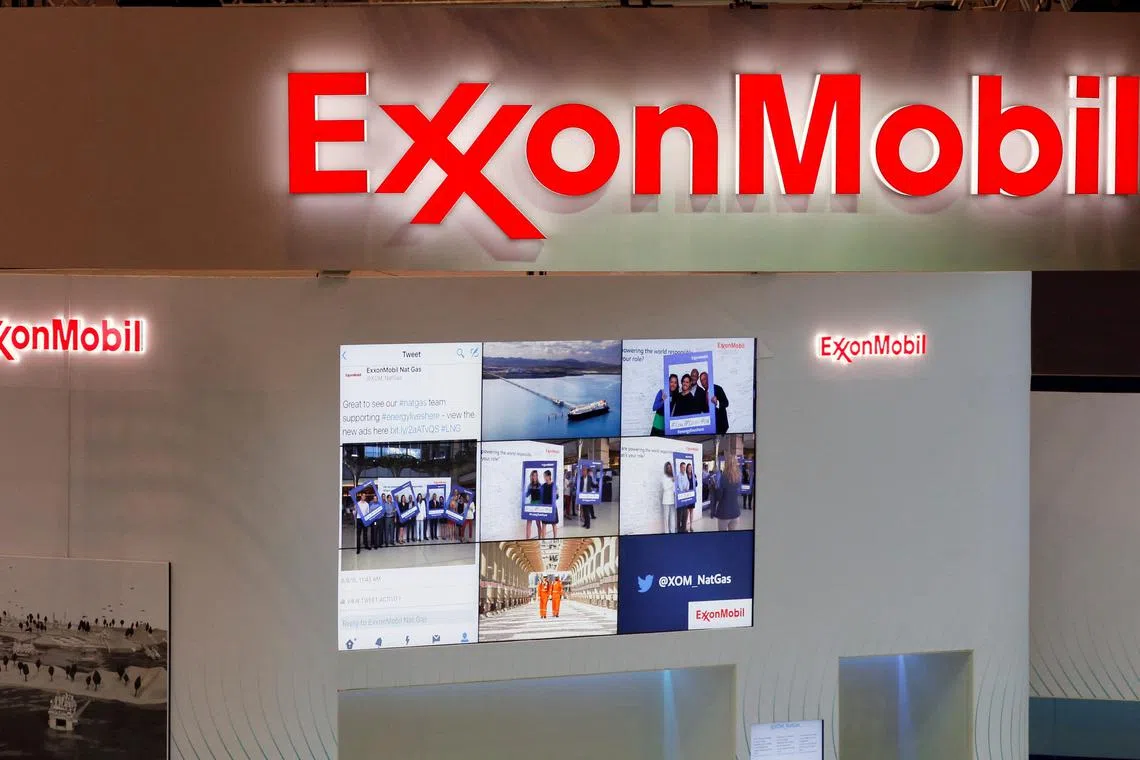Exxon wants to make more of the materials needed for EV batteries
Sign up now: Get ST's newsletters delivered to your inbox

Under the deal, announced on Sept 9, the oil giant will buy a production facility, research centre and other assets from Superior Graphite.
PHOTO: REUTERS
Rebecca F. Elliott
Follow topic:
- Exxon Mobil is acquiring Superior Graphite assets to produce synthetic graphite, a key battery component, aiming for commercial production by 2029.
- Despite EV demand uncertainties and expiring tax credits, Exxon sees long-term growth in batteries for EVs and energy storage.
- Exxon aims to create a domestic graphite supply chain, leveraging its technology to improve battery charging and driving range.
AI generated
ExxonMobil, the largest US oil and gas company, is pushing further into the electric vehicle (EV) business with an acquisition it says will help it produce graphite, an important battery ingredient, by the end of the decade.
Under the deal, announced on Sept 9, the oil giant will buy a production facility, research centre and other assets from Superior Graphite, a privately held Chicago company, for an undisclosed price.
It is the latest in a series of small bets Exxon is making to produce the materials needed to power electric cars and trucks, and help balance supply and demand of energy on the power grids. The company is also working to extract lithium from underground brine in south-west Arkansas.
“Like in any market, there are fluctuations in the near term,” said Mr Dave Andrew, Exxon’s vice-president of new market development, in an interview with The New York Times. “But we fundamentally see the demand for batteries and electric vehicles and, increasingly, in large-scale energy storage solutions, increasing over the longer term.”
Exxon is investing at a difficult time for the US battery business. The challenges include lower-than-expected demand for EVs, higher tariffs on imported materials, and the end in October of a US$7,500 (S$9,600) federal tax credit available for the purchase or lease of battery-powered cars.
The oil company is aiming to start commercial-scale production in 2029, Mr Andrew said.
There are two main categories of graphite, a soft, dark grey form of carbon that typically makes up one half of a lithium-ion battery: mined graphite and its manufactured cousin, synthetic graphite. Exxon plans to make the latter.
Exxon’s chief executive Darren Woods has said that the company’s proprietary technology could enable batteries to charge more quickly, while improving how far a car can be driven on a full charge by 30 per cent.
Graphite is attractive partly because China produces or processes nearly all of the material that is used in batteries. US companies have strong political and financial incentives to develop domestic supplies of the material.
Mr Andrew said: “We have good indications that what we’re bringing to the market in terms of differentiated material and scalable investments is something that, quite frankly, the US domestic supply chain is looking for.”
Of course, it is unclear whether the oil giant will see its plans through to fruition. An Exxon scientist notably developed the first working lithium-ion battery in the 1970s – and later shared a Nobel Prize for that work. But Exxon’s interest in the technology faded as management worried that the market was too small.
Exxon has also been looking to branch out into areas that it says complement its existing business, such as generating power for data centres while capturing most of the associated carbon dioxide emissions.
But some of its plans for such new businesses have been delayed. At one point, Exxon aimed to start producing lithium in 2027, but that has moved to 2028.
Mr Woods said in August, during the company’s second-quarter earnings call: “We’re continuing to work the lithium technology piece of the equation, very focused on getting that cost down. That may take longer than we had anticipated.” NYTIMES

